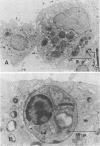Abstract
Leishmania donovani promastigotes were incubated with human monocyte-derived macrophages in vitro to assess the role of macrophages in the early stage of visceral leishmaniasis. Adherent mononuclear cells, obtained from nonimmune human donors, were cultivated on glass cover slips for 5 days and then incubated with axenically grown promastigotes in the presence of heat-inactivated autologous serum. Promastigotes attached to macrophages with either their flagellar or aflagellar ends, and macrophage pseudopodia formed around them. Intracellular parasites were identified within phagocytic vacuoles by electron microscopy, and the parasites assumed a form similar to that of amastigotes obtained from infected hamster spleens. Initially, 67 +/- 5% of the macrophages were infected with a mean of 4.2 +/- 0.7 parasites per infected cell. After 6 days of incubation, 79 +/- 7% of the macrophages were infected with 15.9 +/- 3.2 parasites per infected cell. The total number of parasites per monolayer increased from 4.8 +/- 0.8 x 10(5) to 1.8 +/- 0.4 x 10(6) (P less than 0.05). Dividing parasites were identified in macrophage vacuoles by electron microscopy. Human monocyte-derived macrophage vacuoles by electron microscopy. Human monocyte-derived macrophages can phagocytize promastigotes, allow the conversion of promastigotes to an amastigote-like state, and support intracellular multiplication.
Full text
PDF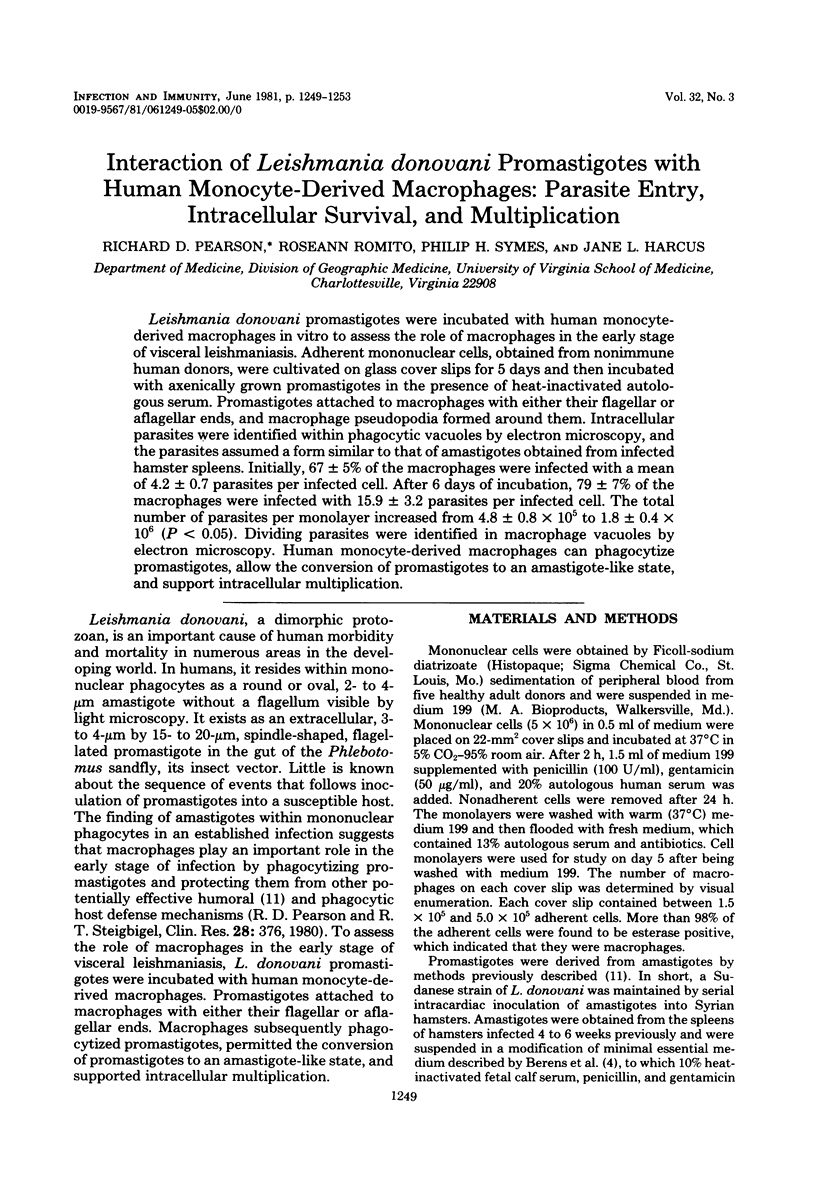
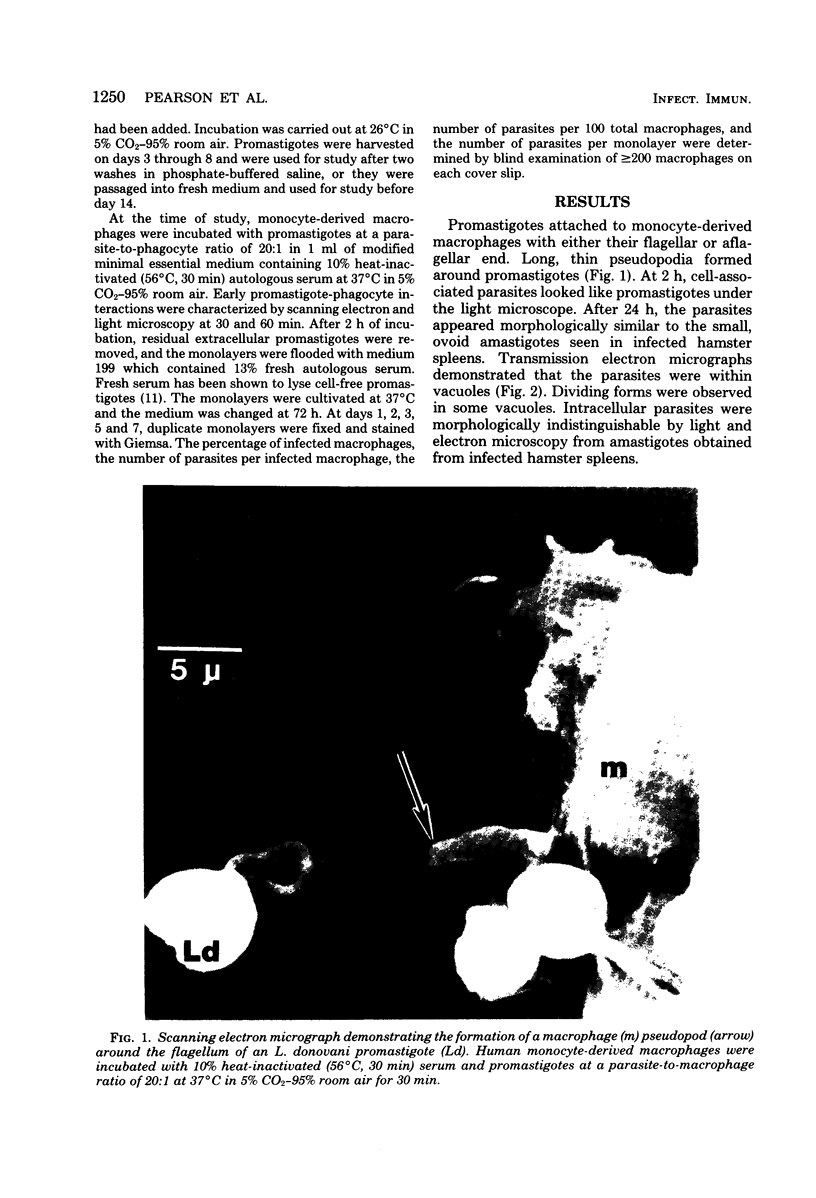
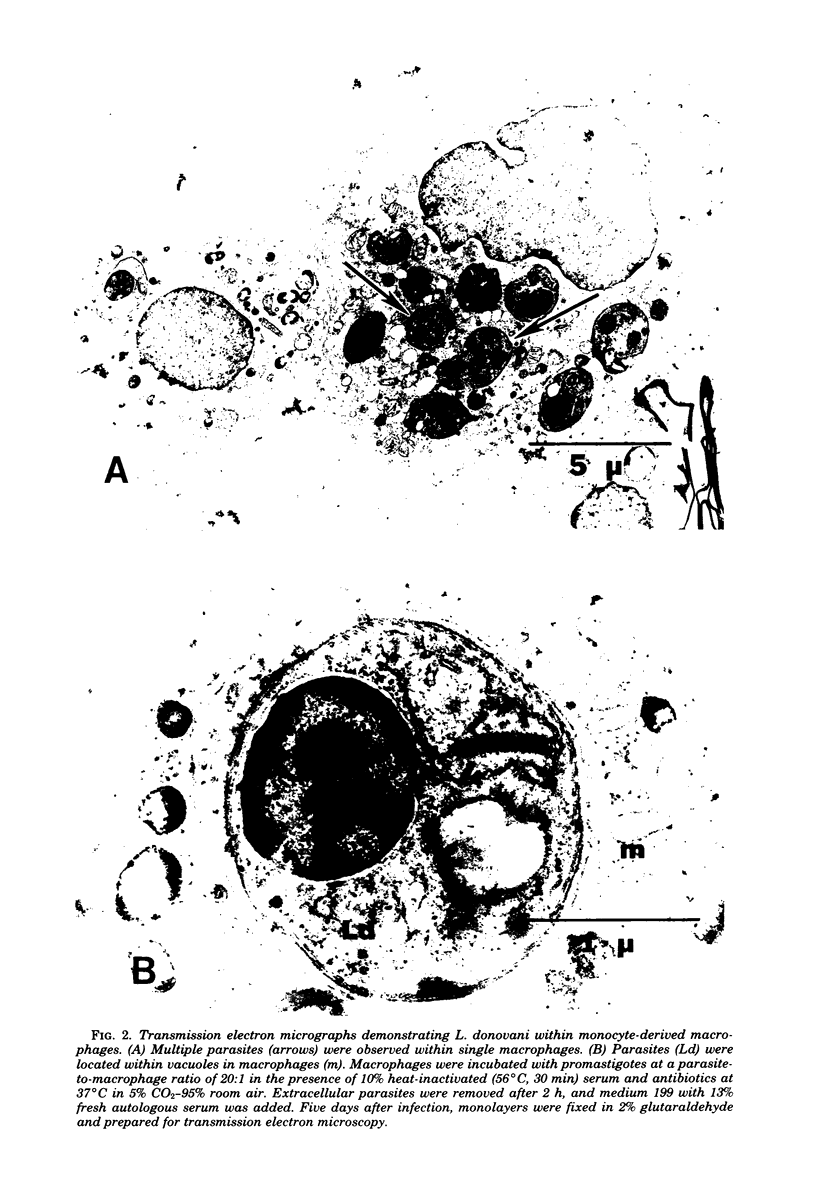
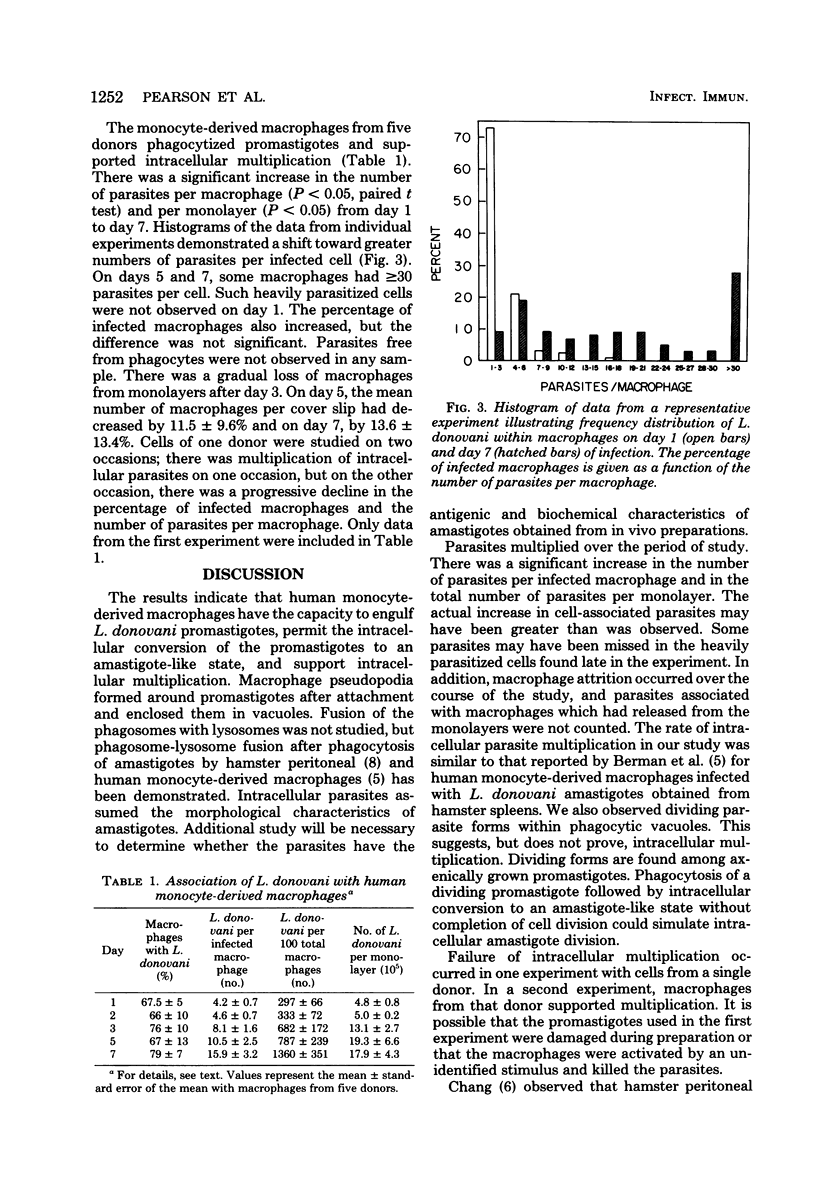
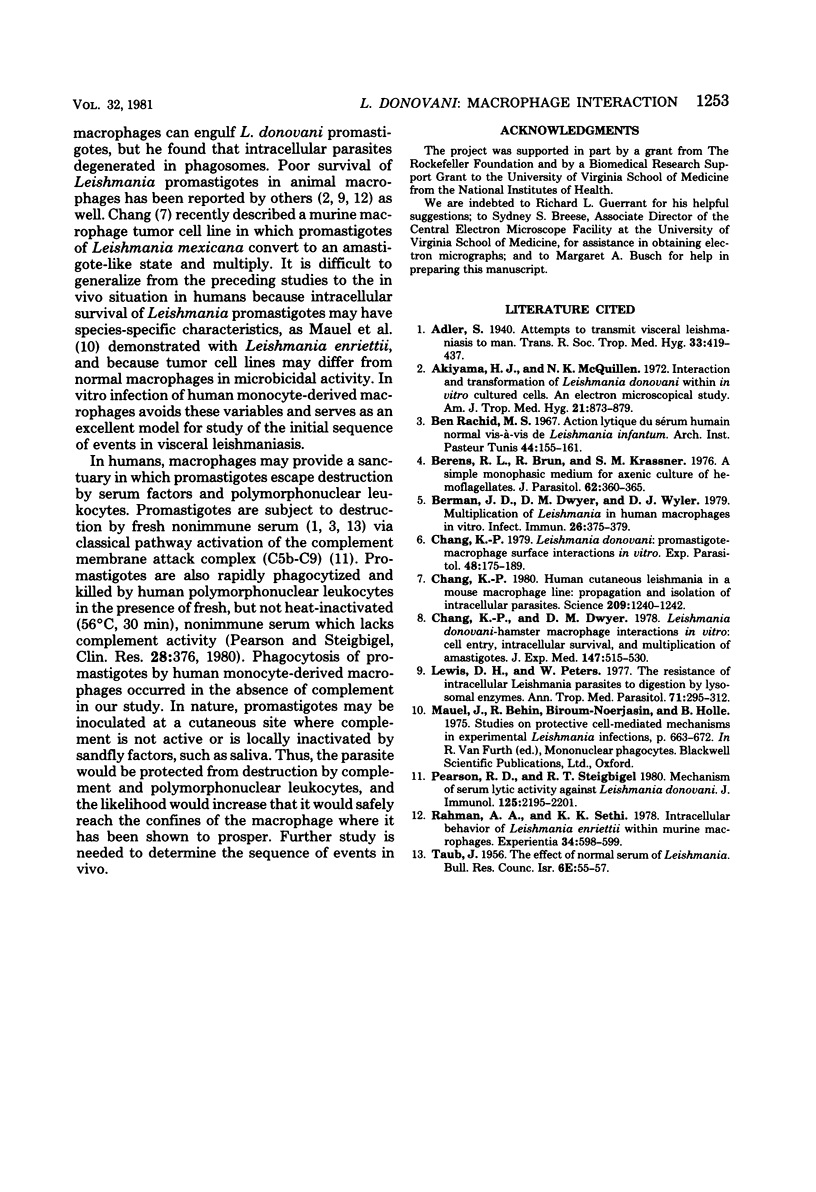
Images in this article
Selected References
These references are in PubMed. This may not be the complete list of references from this article.
- Akiyama H. J., McQuillen N. K. Interaction and transformation of Leishmania donovani within in vitro cultured cells. An electron microscopical study. Am J Trop Med Hyg. 1972 Nov;21(6):873–879. doi: 10.4269/ajtmh.1972.21.873. [DOI] [PubMed] [Google Scholar]
- Berens R. L., Brun R., Krassner S. M. A simple monophasic medium for axenic culture of hemoflagellates. J Parasitol. 1976 Jun;62(3):360–365. [PubMed] [Google Scholar]
- Berman J. D., Dwyer D. M., Wyler D. J. Multiplication of Leishmania in human macrophages in vitro. Infect Immun. 1979 Oct;26(1):375–379. doi: 10.1128/iai.26.1.375-379.1979. [DOI] [PMC free article] [PubMed] [Google Scholar]
- Chang K. P., Dwyer D. M. Leishmania donovani. Hamster macrophage interactions in vitro: cell entry, intracellular survival, and multiplication of amastigotes. J Exp Med. 1978 Feb 1;147(2):515–530. doi: 10.1084/jem.147.2.515. [DOI] [PMC free article] [PubMed] [Google Scholar]
- Chang K. P. Human cutaneous lieshmania in a mouse macrophage line: propagation and isolation of intracellular parasites. Science. 1980 Sep 12;209(4462):1240–1242. doi: 10.1126/science.7403880. [DOI] [PubMed] [Google Scholar]
- Chang K. P. Leishmania donovani: promastigote--macrophage surface interactions in vitro. Exp Parasitol. 1979 Oct;48(2):175–189. doi: 10.1016/0014-4894(79)90097-3. [DOI] [PubMed] [Google Scholar]
- Lewis D. H., Peters W. The resistance of intracellular Leishmania parasites to digestion by lysosomal enzymes. Ann Trop Med Parasitol. 1977 Sep;71(3):295–312. doi: 10.1080/00034983.1977.11687192. [DOI] [PubMed] [Google Scholar]
- Pearson R. D., Steigbigel R. T. Mechanism of lethal effect of human serum upon Leishmania donovani. J Immunol. 1980 Nov;125(5):2195–2201. [PubMed] [Google Scholar]
- Rahman A. A., Sethi K. K. Intracellular behaviour of Leishmania enriettii within murine macrophages. Experientia. 1978 May 15;34(5):598–599. doi: 10.1007/BF01936981. [DOI] [PubMed] [Google Scholar]




